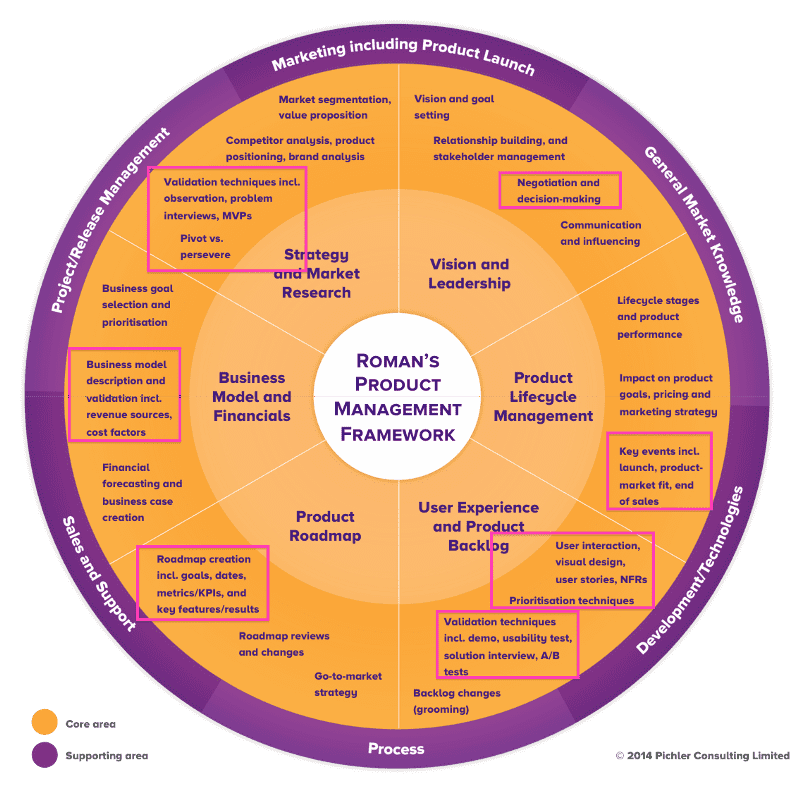A brief post to list eight trends that are shaping modern product management. This is based on my personal observations. Your observations may vary.
- Rise of UX and “consumerification” of the enterprise. Even for B2B the UX bar is set extremely high. “Just winging it” is not an option. Gone are the days when a PM can do double duty as an interaction designer, UX Researcher, information architect, and visual designer. Design thinking is being mentioned hand-in-hand with DevOps, organizational design, service design, and Agile itself.
- Multiple touch-points. You’re not just working on a desktop web browser. A typical product will have multiple touch-points including mobile, tablets, and even connected devices (“things”). Products integrate services from large and complex ecosystems. It’s a lot to process.
- Lean Startup and LeanUX. A focus on validated learning vs. big batches based on unvalidated assumptions. Product development is cast as an incremental learning process vs. a feature delivery process. Authors like Jeff Gothelf and Josh Seiden (authors of Lean UX: Applying Lean Principles to Improve User Experience) stress a focus on “outcomes over features”. One of the most notable Lean Startup artifacts is the “MVP”. In its earliest incantation this was actually meant to be a Minimally Viable Product Experiment. It’s not truly viable to sell or market, but rather designed to elicit learnings and guide what will eventually be viable to users.
- Increased customer/user community management demands. Customers have countless touch-points through which to interact with your company. Consider the rise of companies like Intercom and others. While incredibly valuable, this can add a significant burden for already overextended product managers. An outward facing role is a necessity. But can a single person juggle that with internal facing demands?
- Continuous delivery. Teams are delivering high quality code more quickly and in smaller batches. Heavy release train management is less common. This is a double-edged sword. On one hand it limits batch size (and onerous release planning) which is almost always positive. On the other hand it increases demands on teams for rapid tactical product ownership and coordination.
- Kanban and Post-Scrum Agile. To support continuous delivery, teams are adopting new approaches (e.g. Kanban Method) that challenge the traditional cadences of Scrum which in turn challenge traditional PO roles within Scrum. Accepting stories becomes near continuous. Grooming is ad-hoc based on demand. This presents a scheduling nightmares for the busy PM and further necessities a level of dedication and availability to the team.
- Availability of data (both qualitative and quantitative) and ease of instrumentation. Teams are swimming in data and new tools allow easy feature instrumentation. A Google PM ad lists the following qualification: “demonstrated ability to dive into quantitative and qualitative data and derive data-driven solutions.” Basic statistics, experiment design, ethnography, and general research methodologies are now essential product manager skills. It is becoming increasingly clear that to some extent we’re all guessing (sometimes educated guesses, but guesses nonetheless). The data side presents immense opportunities to build quickly, measure, and learn.
- Expanded definitions of Agility. There is a new focus on “whole organization” Agility vs. traditional Business/Team silos. Siloed teams require a “glue” role — aka Product Manager — to manage disparate stakeholders. Increasingly these barriers are falling to the wayside. In their place are autonomous business units with all the resources necessary for ideation, delivery, marketing, and revenue generation. The distance from the team to other stakeholders is shorter. Below is an amazing infographic by Roman Pichler available here. In pink I’ve indicated where the trends above impact traditional product manager responsibilities. UX has firm influence in the “User Experience and Product Backlog” sector. Lean Startup and LeanUX overlap “Strategy and Market Research”. Continuous Delivery impacts roadmap creation and “key events” (aka release planning / product lifecycle management). And data impacts multiple areas.
So what does this all mean for product managers? I’ll save that for another post. Please comment if you have anything to add.
